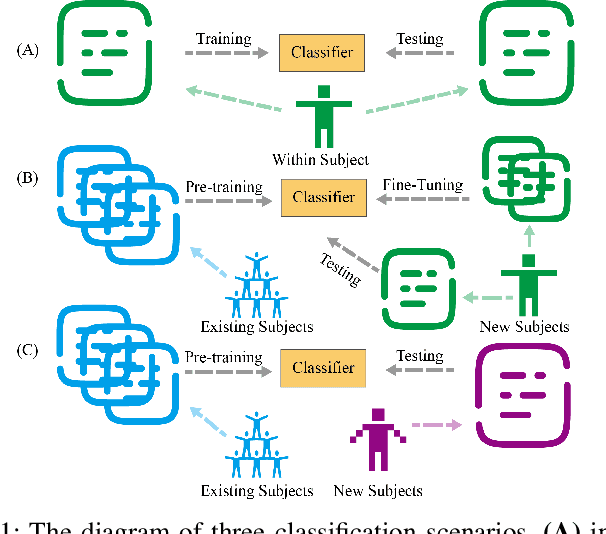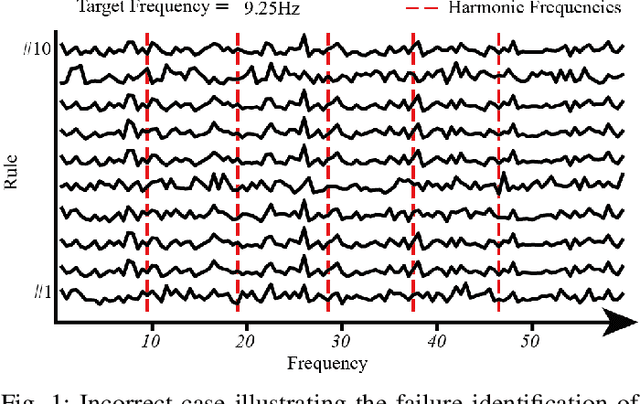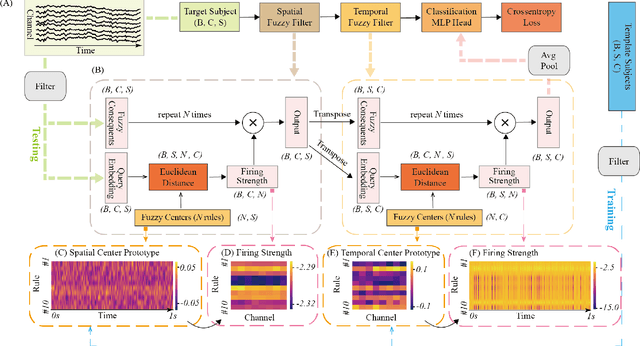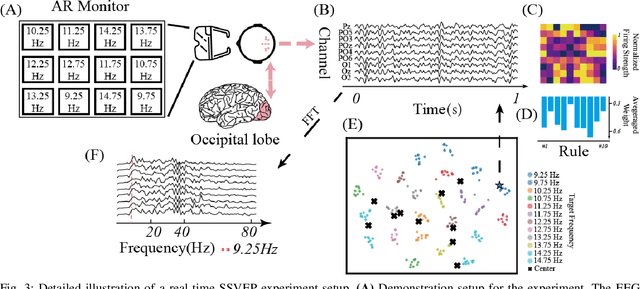Liang Ou
iFuzzyTL: Interpretable Fuzzy Transfer Learning for SSVEP BCI System
Oct 16, 2024



Abstract:The rapid evolution of Brain-Computer Interfaces (BCIs) has significantly influenced the domain of human-computer interaction, with Steady-State Visual Evoked Potentials (SSVEP) emerging as a notably robust paradigm. This study explores advanced classification techniques leveraging interpretable fuzzy transfer learning (iFuzzyTL) to enhance the adaptability and performance of SSVEP-based systems. Recent efforts have strengthened to reduce calibration requirements through innovative transfer learning approaches, which refine cross-subject generalizability and minimize calibration through strategic application of domain adaptation and few-shot learning strategies. Pioneering developments in deep learning also offer promising enhancements, facilitating robust domain adaptation and significantly improving system responsiveness and accuracy in SSVEP classification. However, these methods often require complex tuning and extensive data, limiting immediate applicability. iFuzzyTL introduces an adaptive framework that combines fuzzy logic principles with neural network architectures, focusing on efficient knowledge transfer and domain adaptation. iFuzzyTL refines input signal processing and classification in a human-interpretable format by integrating fuzzy inference systems and attention mechanisms. This approach bolsters the model's precision and aligns with real-world operational demands by effectively managing the inherent variability and uncertainty of EEG data. The model's efficacy is demonstrated across three datasets: 12JFPM (89.70% accuracy for 1s with an information transfer rate (ITR) of 149.58), Benchmark (85.81% accuracy for 1s with an ITR of 213.99), and eldBETA (76.50% accuracy for 1s with an ITR of 94.63), achieving state-of-the-art results and setting new benchmarks for SSVEP BCI performance.
A Fuzzy-based Approach to Predict Human Interaction by Functional Near-Infrared Spectroscopy
Sep 26, 2024



Abstract:The paper introduces a Fuzzy-based Attention (Fuzzy Attention Layer) mechanism, a novel computational approach to enhance the interpretability and efficacy of neural models in psychological research. The proposed Fuzzy Attention Layer mechanism is integrated as a neural network layer within the Transformer Encoder model to facilitate the analysis of complex psychological phenomena through neural signals, such as those captured by functional Near-Infrared Spectroscopy (fNIRS). By leveraging fuzzy logic, the Fuzzy Attention Layer is capable of learning and identifying interpretable patterns of neural activity. This capability addresses a significant challenge when using Transformer: the lack of transparency in determining which specific brain activities most contribute to particular predictions. Our experimental results demonstrated on fNIRS data from subjects engaged in social interactions involving handholding reveal that the Fuzzy Attention Layer not only learns interpretable patterns of neural activity but also enhances model performance. Additionally, the learned patterns provide deeper insights into the neural correlates of interpersonal touch and emotional exchange. The application of our model shows promising potential in deciphering the subtle complexities of human social behaviors, thereby contributing significantly to the fields of social neuroscience and psychological AI.
 Add to Chrome
Add to Chrome Add to Firefox
Add to Firefox Add to Edge
Add to Edge